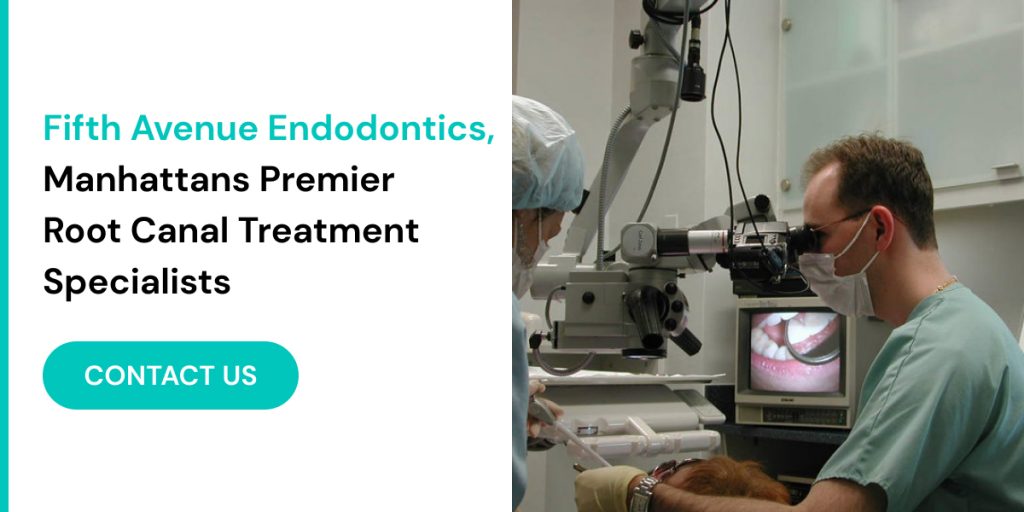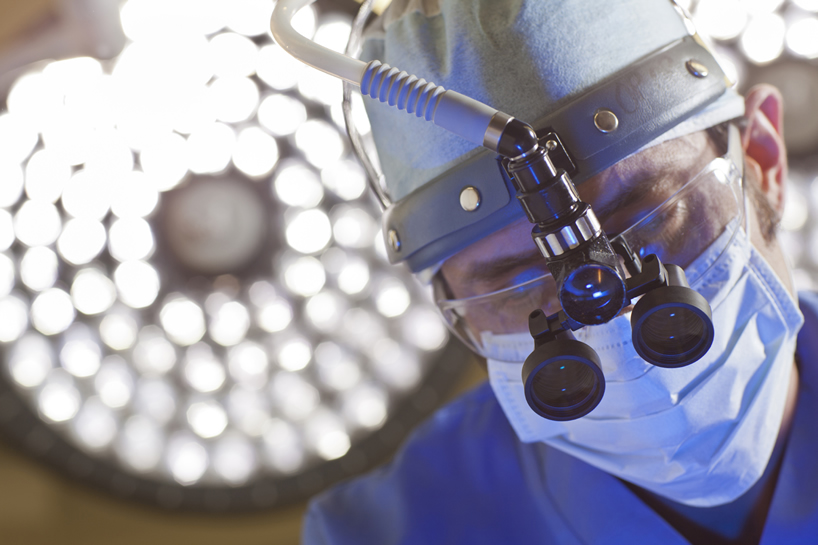When faced with complex dental issues, patients often seek specialized care to ensure the best possible outcomes. One particularly challenging scenario in endodontics is the treatment of teeth with multiple root canals. These cases are intricate due to the complexity and number of the root canal systems involved. For residents of Midtown Manhattan who are navigating these complexities, understanding how endodontists handle such cases is crucial. At Fifth Avenue Endodontic, Dr. Iofin and his team bring extensive expertise and advanced techniques to the table, addressing the unique challenges presented by multiple root canals.
Dr. Iofin’s approach involves a thorough diagnostic process to map out each canal and plan the most effective treatment strategy. Employing cutting-edge technology, such as digital imaging and microscopic examination, the team ensures a precise and meticulous treatment. This advanced care is essential not only for resolving current issues but also for preventing future complications and preserving the tooth’s functionality. For those in Midtown Manhattan, Fifth Avenue Endodontic offers a comprehensive solution to complex root canal cases, combining skill and innovation to restore dental health with exceptional care.
Understanding Multiple Root Canals
Teeth with multiple root canals present a unique set of challenges that necessitate a highly detailed and precise approach. Unlike single-rooted teeth, which generally have a more straightforward canal system, multi-rooted teeth contain several intricate pathways that converge at the tooth’s root. Each of these canals must be carefully cleaned and sealed to ensure the health and longevity of the tooth.
The process begins with a thorough diagnostic evaluation, which includes advanced imaging techniques such as digital X-rays or Cone Beam Computed Tomography (CBCT). These tools provide a detailed view of the root canal system, allowing the endodontist to map out the complex network of canals. This step is crucial for planning the treatment approach and identifying any potential complications.
During the treatment itself, an Endodontist in Midtown Manhattan like Dr. Iofin utilizes state-of-the-art technology and techniques to navigate the delicate and often curved canals. Specialized instruments are used to meticulously clean each canal, removing infected tissue and debris. The canals are then shaped to facilitate effective filling and sealing. The goal is to eliminate bacteria and prevent future infection, which is crucial for preserving the tooth’s structure and function.
Furthermore, Dr. Iofin employs advanced disinfection methods and filling materials that are biocompatible, ensuring a long-lasting and successful outcome. The precision and care required in treating multiple root canals highlight the importance of specialized expertise. For residents of Midtown Manhattan, Fifth Avenue Endodontic offers this level of precision, combining advanced technology with expert skill to address the complexities of multi-rooted teeth. This comprehensive approach ensures that each patient receives the highest standard of care, aimed at preserving their dental health and restoring their smile.
The Diagnostic Process
Before initiating any endodontic treatment, a comprehensive diagnostic process is essential to ensure the best outcomes. This process involves several critical steps to accurately assess the condition of the tooth and plan the most effective treatment approach.
- 1. Clinical Examination: The initial step in the diagnostic process is a detailed clinical examination conducted by Dr. Iofin. During this examination, the endodontist evaluates the tooth in question to determine the extent of the damage or infection. This assessment includes checking for signs of pain, swelling, or other symptoms that indicate the presence of infection or complications within the root canals. Dr. Iofin will also perform a thorough assessment of the tooth’s structure and the surrounding gums to gather comprehensive information about the tooth’s overall health.
- 2. Patient History and Symptoms Review: In addition to the physical examination, a review of the patient’s medical and dental history is conducted. This includes discussing any previous dental treatments, existing health conditions, and symptoms the patient is experiencing. Understanding the patient’s symptoms, such as persistent pain or discomfort, helps to pinpoint the root of the problem and tailor the treatment plan accordingly.
- 3. Imaging Techniques: Once the clinical examination is complete, advanced imaging techniques are utilized to gain a detailed view of the root canal system. Digital X-rays are commonly used to capture clear images of the tooth and surrounding structures. These images help identify the number, shape, and curvature of the root canals, which is crucial for planning the treatment.
- For more complex cases, Cone Beam Computed Tomography (CBCT) scans may be employed. CBCT provides a three-dimensional view of the tooth and its root canal system, offering a comprehensive view of the internal anatomy. This advanced imaging technique allows Dr. Iofin to visualize the intricate details of the root canal system, including any variations or anomalies that may not be apparent on standard X-rays. By using CBCT, the endodontist can better plan the procedure and anticipate potential challenges.
- 4. Treatment Planning: With the information gathered from the clinical examination and imaging, Dr. Iofin develops a detailed treatment plan. This plan outlines the steps required to address the issues within the root canals, including the techniques and materials to be used. A well-structured treatment plan is essential for achieving successful outcomes and ensuring the long-term health of the tooth.
In summary, the diagnostic process is a critical component of endodontic care. It involves a thorough clinical examination, detailed review of patient history, and advanced imaging techniques to accurately assess and plan the treatment for teeth with complex root canal systems. This meticulous approach ensures that each patient receives tailored and effective care, setting the stage for successful treatment outcomes.

Treatment Techniques for Multiple Root Canals
Treating teeth with multiple root canals is a sophisticated procedure that requires a methodical and precise approach. Endodontists like Dr. Iofin at Fifth Avenue Endodontic utilize advanced techniques to ensure the successful treatment of these complex cases. Here’s a closer look at each step involved in managing multiple root canals:
- 1. Access Opening: The treatment begins with creating a precise access opening. This step is crucial for reaching the intricate network of root canals within the tooth. Dr. Iofin carefully removes a portion of the tooth’s crown to gain access while minimizing disruption to the remaining tooth structure. The goal is to open up the tooth in a way that allows for complete visibility and accessibility to all the root canals, including those that may be curved or difficult to reach. This initial step sets the stage for effective cleaning and shaping of the canals.
- 2. Cleaning and Shaping: Once access is achieved, the next step involves cleaning and shaping each root canal. Dr. Iofin uses specialized instruments, such as endodontic files and reamers, to meticulously remove infected tissue, debris, and any damaged pulp from within the canals. The process is performed with precision to ensure that the canal walls are properly shaped. Shaping is essential not only for removing bacteria and debris but also for preparing the canals for effective sealing. The endodontist pays careful attention to the unique curvature and complexity of each canal to achieve optimal results.
- 3. Disinfection: Thorough disinfection is a critical component of root canal treatment. After cleaning, each canal is irrigated with disinfectant solutions to eliminate any remaining bacteria and debris. Dr. Iofin employs advanced irrigation techniques to ensure that every nook and cranny within the canal system is effectively disinfected. This step is vital for preventing future infections and promoting successful healing. Proper disinfection helps to create a sterile environment within the canals, which is crucial for the long-term health of the tooth.
- 4. Filling: The final step in the treatment process is filling the root canals with a biocompatible material. After the canals have been cleaned, shaped, and disinfected, they are filled with a material such as gutta-percha, which is a rubber-like substance. This material is used to seal the canals and prevent any reinfection. Dr. Iofin ensures that the filling material is properly compacted to eliminate any voids and secure the canals from external contaminants. This step is essential for the long-term success of the treatment, as it helps to maintain the integrity of the tooth and protect it from future issues.
In summary, treating teeth with multiple root canals involves a series of meticulous steps, including creating an access opening, cleaning and shaping the canals, disinfecting them, and finally filling them with a biocompatible material. Dr. Iofin and his team at Fifth Avenue Endodontic employ these advanced techniques to address the complexities of multi-rooted teeth and ensure optimal outcomes for their patients.
Advanced Techniques for Complex Cases
When dealing with exceptionally complex or curved root canals, traditional methods may not suffice. Endodontists, like Dr. Iofin at Fifth Avenue Endodontic, often turn to advanced techniques to ensure precise and effective treatment. These techniques are crucial for managing the unique challenges presented by intricate root canal systems and achieving optimal outcomes.
- 1. Microscopic Examination: One of the most significant advancements in endodontic treatment is the use of microscopic examination. Dr. Iofin utilizes a high-powered microscope to gain a detailed and magnified view of the root canal system. This enhanced visibility allows for a more precise assessment of the canal anatomy, including any fine or complex structures that may be present. With the aid of a microscope, Dr. Iofin can identify and address issues that might be missed with the naked eye, such as tiny lateral canals or calcified areas. The ability to see and work with such precision is crucial in ensuring that all parts of the root canal system are thoroughly cleaned, shaped, and sealed, thereby improving the overall success rate of the treatment.
- 2. Ultrasonic Instruments: In addition to microscopic examination, ultrasonic instruments play a pivotal role in managing complex root canal cases. These tools use high-frequency sound waves to assist in cleaning and shaping the root canals more effectively. Ultrasonic instruments are particularly useful in challenging cases where traditional hand files or rotary instruments might struggle. The ultrasonic waves help to remove debris and disinfect the root canal system more thoroughly. They are also beneficial for navigating curved or narrow canals, as they can adapt to the intricate paths within the tooth.
- 3. Laser Technology: Another advanced technique occasionally employed in complex cases is laser technology. Lasers can be used to enhance disinfection by targeting and eliminating bacteria within the root canals. The precision of laser technology allows for more effective cleaning and can sometimes aid in the removal of stubborn or calcified tissue. While not always used, lasers can be a valuable addition to the endodontic toolkit for specific cases.
- 4. Advanced Irrigation Solutions: Effective irrigation is crucial for thorough disinfection of the root canals. In complex cases, Dr. Iofin may use advanced irrigation solutions or techniques, such as sonic or ultrasonic irrigation systems, to enhance the cleaning process. These systems help to reach and clean areas that might be difficult to access with conventional irrigation methods, ensuring that all parts of the root canal system are adequately treated.
In summary, treating complex root canal systems requires a range of advanced techniques to address the unique challenges they present. By employing microscopic examination, ultrasonic instruments, laser technology, and advanced irrigation solutions, Dr. Iofin and his team at Fifth Avenue Endodontic can achieve a high level of precision and effectiveness in their treatments. These technologies ensure that every aspect of the root canal system is thoroughly addressed, leading to improved outcomes and long-term dental health for patients.
Post-Treatment Care and Follow-Up
After undergoing a root canal treatment, proper post-treatment care is essential to ensure effective healing and the long-term success of the procedure. Dr. Iofin and his team at Fifth Avenue Endodontic are dedicated to providing comprehensive post-treatment care guidelines to help patients navigate their recovery smoothly and effectively.
1. Post-Treatment Instructions: Following the root canal procedure, patients will receive detailed instructions on how to care for their tooth and mouth. These guidelines typically include recommendations for managing any discomfort or swelling, which can be a normal part of the healing process. Dr. Iofin may prescribe pain relievers or recommend over-the-counter medications to help alleviate any pain or discomfort. It’s important for patients to follow these instructions carefully to minimize discomfort and promote healing.
2. Oral Hygiene: Maintaining excellent oral hygiene is crucial after a root canal treatment. Patients should continue to brush and floss regularly but may need to be gentle around the treated area. Dr. Iofin will provide specific advice on how to clean the area without causing irritation. Good oral hygiene helps to prevent infection and ensures that the treated tooth remains in good condition as it heals.
3. Diet and Activity: Patients may need to modify their diet for a short period following the procedure. Dr. Iofin might recommend avoiding hard, chewy, or sticky foods that could put stress on the treated tooth. Sticking to a soft-food diet can help prevent any damage to the temporary filling or crown. Additionally, patients should avoid any strenuous activities that could affect the healing process.
4. Follow-Up Appointments: Dr. Iofin schedules follow-up appointments to monitor the tooth’s healing and overall recovery. These visits are crucial for assessing how well the tooth has responded to the treatment and for making any necessary adjustments. During these appointments, Dr. Iofin will check for signs of infection, evaluate the effectiveness of the treatment, and ensure that the tooth is functioning properly. Follow-up care also provides an opportunity for patients to discuss any concerns or issues they may be experiencing.
5. Permanent Restoration: In many cases, after the root canal is completed and healing is underway, a permanent restoration such as a crown will be needed to protect the tooth and restore its full function. Dr. Iofin will discuss the timing and process for placing the permanent restoration during follow-up visits.
In summary, post-treatment care and follow-up are critical components of the root canal process. By adhering to Dr. Iofin’s care instructions, maintaining good oral hygiene, and attending scheduled follow-up appointments, patients can ensure that their root canal treatment is successful and their dental health is preserved. The dedicated team at Fifth Avenue Endodontic is committed to supporting patients through every stage of their recovery, ensuring a smooth and effective healing process.

Conclusion
Treating teeth with multiple root canals is a sophisticated procedure that requires the expertise of an experienced Endodontist in Midtown Manhattan. Dr. Iofin, along with the skilled team at Fifth Avenue Endodontic, employs advanced techniques and technology to ensure successful outcomes for their patients. By understanding the process and following post-treatment care recommendations, patients can maintain optimal dental health and function.
For residents in Midtown Manhattan seeking expert endodontic care, Fifth Avenue Endodontic offers the specialized treatment necessary for complex cases. Dr. Iofin’s commitment to precision and patient care ensures that every root canal treatment is performed to the highest standards.

